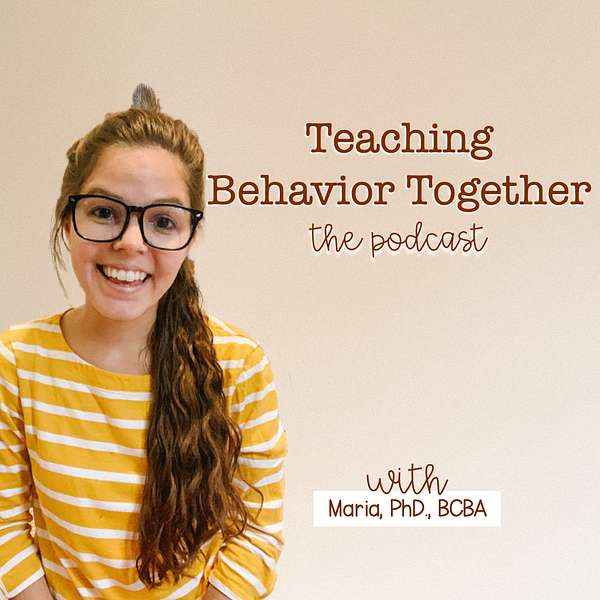
The Teaching Behavior Together Podcast
The Teaching Behavior Together Podcast
Strategies for Disruptive Classroom Behaviors
Strategies for disruptive classroom behaviors can be challenging to implement. In this episode I talk about my go to strategies for disruptive classroom behaviors that will help increase behaviors you want to see in your classroom.
First I want to start off by just defining what I mean by disruptive behavior. In most instances a disruptive behavior will be defined as anything that interrupts or takes away from the learning of others.
The first strategy I typically recommend would be having a conversation with the student about the behavior. During this conversation I would ask the student about the behavior they are engaging in and let them know how the behavior affects others in the classroom. Now I do not in any way mean you should talk with the student and “blame” them for their behavior or for how it affects others, but having a conversation with the student helps you build rapport and can help the student build perspective taking skills. Believe it or not, some students might not realize that their behavior affects others or that it is disruptive in the first place. A conversation and a collaborative plan could go a long way in the classroom.
Another strategy would be giving the student a piece of paper, dry erase board, post it, anything they can write on during class. Whenever they have a thought have them write it on the document and make time for them to share those thoughts with you or a peer later. This strategy works best in situations where the disruptive behavior takes the form of shouting out during the class or discussions with peers during the class. Our students want to be heard, but we also need to deliver a lesson to our class. This can be a great way to teach students some self-regulation skills and also can help them determine which information is really important and something they want to share with you or some peers.
Proximity is another great strategy for disruptive behavior. When using proximity you are placing yourself close to the student or students. This does a couple of things, first anytime someone comes closer to someone the behaviors usually stop. This is how proximity works. Additionally, when you are close to students you have an easier time prompting them. I typically recommend discrete or quite prompts as no student likes to be called out in class and doing this can lead to a power struggle, and being close by allows for this to happen.
Any time you can use a visual or gestural prompt over a verbal prompt, I would do that. At times when we use verbal prompts it invites a verbal response back. Say for instance you redirect a student using a verbal prompt, which then get’s a reply-“I'm not doing that” first, this student is probably embarrassed for being called out. Second this could start a power struggle. Third, your verbal prompt could be further disrupting the environment. So in these situations, a gestural or visual prompt can be very helpful.
I know what you might be thinking at this point, what about situations where it seems like the student is engaging in the behavior to cause a disruption or on purpose. In these situations, I would first say that coming at it from the mindset that the student is engaging in the behavior on purpose might cloud our ability to provide strategies and supports to the student. In these situations, I would assess lagging skills and determine where we can provide explicit instruction on replacement behaviors. You can also explore conducting a functional behavior assessment to determine the function of the behavior and teach a functionally alternative replacement behavior.
Resources Discussed in this Episode
Free Behavior Intervention Guide
Follow me on Instagram